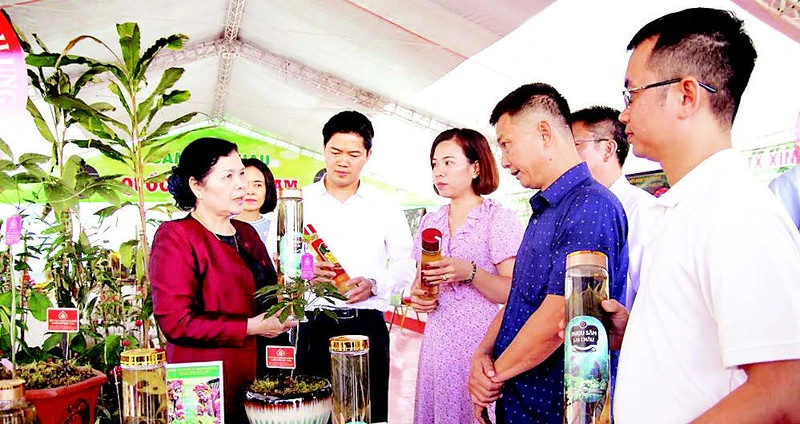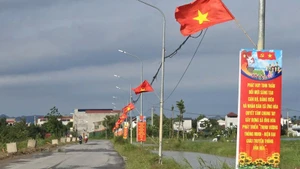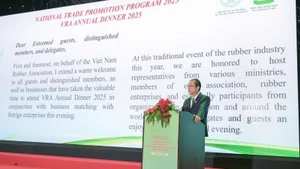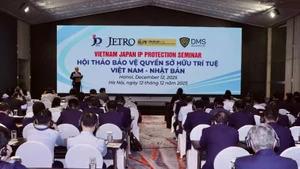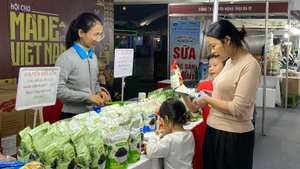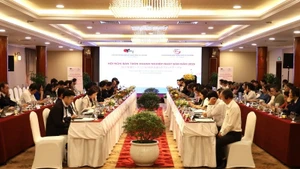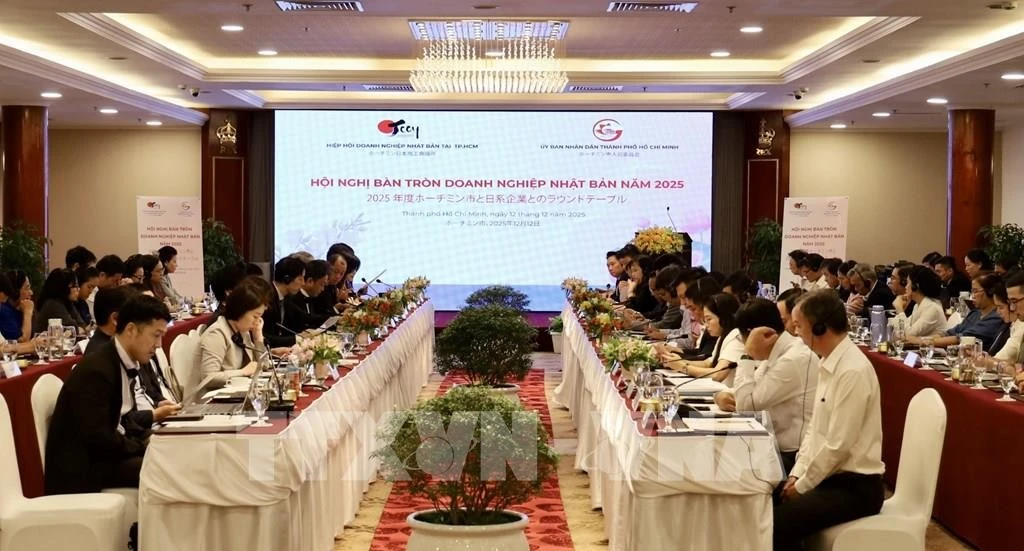With strong political will and a clear strategic orientation, Lai Chau is well-positioned to meet this ambitious target, helping lay a solid foundation for the country to reach double-digit growth rates in the coming years.
Efficient and sustainable resource use
Despite its important geostrategic position, Lai Chau has not attracted as many investors as other provinces in the region. Vu Manh Ha, alternate member of the Party Central Committee and Permanent Deputy Secretary of the Lai Chau Provincial Party Committee, shared that Lai Chau lies in a “fan-spread” position, straddling two dynamic economic corridors: Ha Noi–Dien Bien and Hai Phong–Lao Cai. As such, it hasn’t generated strong appeal for investors. This reality requires Lai Chau to develop a socio-economic strategy with a distinct pathway, unique identity and strong appeal.
Based on this orientation, for the 2020–2025 term, the province has adopted a development strategy with one axis, two zones, three pillars and four breakthrough tasks. The breakthrough tasks include developing synchronised infrastructure; promoting administrative reform; continuing to enhance human resource quality; and focusing on concentrated commodity agricultural development to create key and specialty products of high economic value and efficiency.
Lai Chau’s economic pillars include community-based tourism linked to cultural identity and cross-border trade; energy industry, mining, and agricultural-forestry-aquatic product processing; and multi-value and organic agriculture. All target low-carbon “smokeless” industries and promote sustainable, efficient, and economical resource use. These components align with green economic principles. Thanks to a sound strategy suited to local natural and social conditions, Lai Chau has a strong foundation to meet the centrally assigned growth target of 8% per year.
From 2021 to 2024, the province’s average GRDP growth reached 4.75%, with 2024 alone hitting 10.52%, exceeding the target and ranking 5th nationwide. Per capita GRDP in 2024 reached 56.45 million VND, an increase of 11.75 million VND compared to 2021. Notably, the province’s large forest area generates nearly 500 billion VND annually from forest environmental services, and forest cover stands at 52.86%. In agriculture, the province has established concentrated production zones including nearly 4,000 hectares of commodity rice, nearly 11,000 hectares of tea, 8,100 hectares of fruit trees, 7,500 hectares of macadamia, 13,000 hectares of cinnamon, and over 11,000 hectares of medicinal herbs.
Improved infrastructure has significantly contributed to boosting tourist arrivals, with over 5 million visitors to the province between 2021 and 2025, averaging 33.4% growth per year and generating an estimated revenue of over 3,800 billion VND. In Ban Hon Commune, Tam Duong District, Ban Tham Ecolodge model of 44 households of the Lu ethnic group, combines infrastructure and community-based tourism with cultural preservation. Through the national target programme for socio-economic development in ethnic minority and mountainous areas, Tam Duong District has invested in infrastructure such as bridges, roads, and livestock farms. Residents of Tham Hamlet have actively called for business to invest to form an ecological village tied to community tourism. So far, Ban Tham Ecolodge is a popular eco-tourism destination.
According to Ha Trong Hai, Vice Chairman of the Lai Chau Provincial People's Committee, in addition to adhering to central directives, Lai Chau has outlined key measures to achieve its targets. These include maximising hydropower plant output, boosting import–export activities, particularly via Ma Lu Thang Border Gate, and instructing localities to expand production scale, diversify products, increase tea yield and production cycles through farm-scale operations, develop aquaculture, and support the expansion of beekeeping, medicinal herbs, and short-cycle industrial crops, along with eco-tourism development.
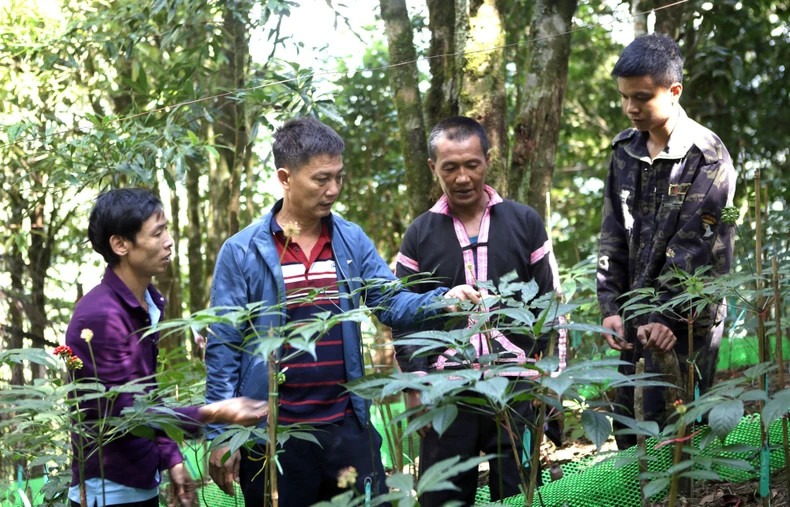 |
| Model of incubating and growing Lai Chau native ginseng under the canopy of primary forest. (Photo: nhandan.vn) |
Another advantage, Hai noted, is the province’s efforts to accelerate investment procedures for the Hoang Lien Tunnel project (connecting Sa Pa Town, Lao Cai Province, with Tam Duong District, Lai Chau Province) and to coordinate implementation of the northern mountainous transport connectivity project (linking Lai Chau City with the Noi Bai–Lao Cai Expressway).
In the past, economic development in Lai Chau Province was very difficult because every economic sector was affected by nature. The Party Committee and authorities of Lai Chau Province unanimously adhered to the “four keeps” principle — keeping land, keeping water, keeping forests, and keeping people — with “keeping people” being the top priority.
Comprehensive care for people’s live
Lai Chau still faces many difficulties: a complex, fragmented terrain and limited infrastructure. Thus, alongside economic growth, the Lai Chau Provincial Party Committee prioritises comprehensive care for people's lives from education, culture, and civilised lifestyle development to vocational training and job creation to ensure social welfare and meet the demands of sustainable development.
The province’s education sector has made significant efforts to achieve the secondary graduation rate of 99.61% in 2024 while also focusing on students’ well-being. For instance, in Ta Mung Commune, Than Uyen District, boarding students receive additional evening meals supported by local residents. From primary level, most students attend school from Monday to Friday. Outside of class, they learn life skills and traditional cultural practices such as sewing, embroidery, and singing and dancing under an “ecological school” model.
Recognising that outdated customs have hindered household economic development, Sung A So, Secretary of the Party cell in Hua Than Hamlet (Muong Than Commune, Than Uyen District), an enlightened and open-minded H’Mong man, spearheaded efforts to abolish elaborate and costly funeral rituals. From his initiative, the Than Uyen District Party Committee discussed and agreed to pilot the model in Phuc Than Commune, which is home to five H’Mong hamlets.
So far, the model has been expanded to all 21 H’Mong hamlets in Than Uyen District. This has become an exemplary model of the province under the Lai Chau Provincial Party Committee’s Resolution 15-NQ/TU (December 22, 2023) on eradicating outdated customs and building a civilised lifestyle among ethnic communities. It has significantly strengthened endogenous capacity for rapid and sustainable socio-economic development.
In parallel with eliminating outdated customs, party committees of communes have also encouraged crop and livestock changes such as expanding tea cultivation and concentrated livestock farming. Vang A Mang, Secretary of the Party Committee of Ta Mung Commune, shared that since the beginning of the term, the commune’s Party Committee has mobilised the entire political system to persuade people to shift crops and livestock. Initially, there was resistance from local people, with concerns such as “tea won’t fill our stomachs.” The commune’s Party Committee proposed pilot models with pioneering party members and outstanding people. After one or two successful seasons, most residents transitioned from upland rice farming to tea cultivation. The rural landscape improved, living standards rose, and the poverty rate fell sharply from 63.53% in 2021 to 12.83% at present.
Beyond “food”, the commune’s Party Committee has also prioritised “education”. The committee visited households to persuade families to send their children to school, aiming for all students to complete secondary education or higher. It also actively sought partnerships with vocational schools in Ha Noi, Hai Phong, and enterprises inside and outside the province to support students. The results have been clear: the first students trained in Hai Phong are going to graduate. The local people’s awareness of education has increased markedly, creating the foundation for sustainable development.
By mobilising the combined strength of families, communities, and individuals, Lai Chau Province’s grassroots political system has played a key role in implementing local socio-economic development tasks. The province has established 1,095 models of studying and following Ho Chi Minh’s ideology, ethics, and style. These initiatives have contributed to local economic growth, for example, tea cultivation models according to VietGAP standards have helped many hamlets escape poverty and meet income criteria in new-style rural area building.
The exemplary Party cell model has further clarified the role of each cadre and Party member in supporting households to develop family-based economies. Despite many local challenges, Party committees at all levels have successfully promoted the pioneering role of cadres and party members, especially leaders, in streamlining the administrative apparatus and organising a two-tier local governance model.
